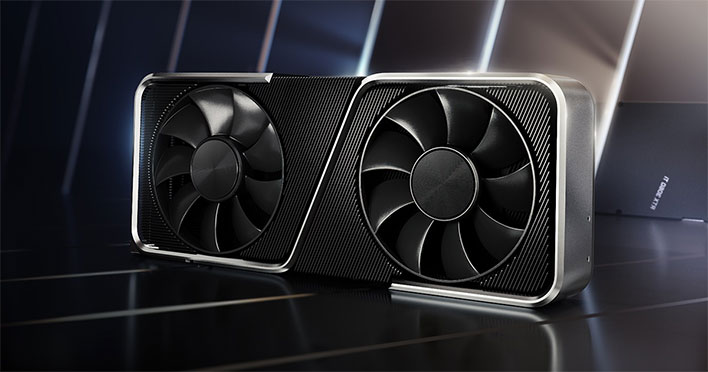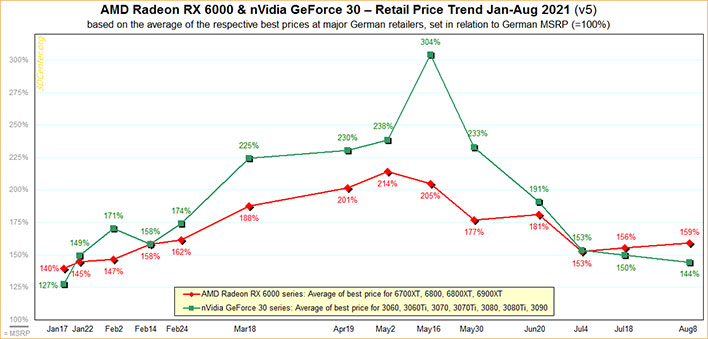GeForce RTX 30 Pricing Free Fall Continues As Radeon RX 6000 Edges Higher

Prices for NVIDIA's GeForce range of consumer graphics cards continue to trend back towards MSRP territory, and if things continue they have been going, they could potentially encroach that level by the end of the year. Or so new price tracking data indicates. Color us skeptical, though we will certainly cross our fingers in hopes of GPU pricing returning to normal.
There is still that pesky semiconductor shortage to contend with, and multiple technology bigwigs (like Intel and TSMC) have warned that it could linger all the way into 2023. We have seen signs of improvement, however. For example, AMD's Ryzen 9 5950X and Ryzen 9 5900X processors are a lot easier to find in stock these days then when they first launched.
What about GPUs, though? Have a look at this chart of pricing trends over the over several months...
The folks at 3DCenter.org have been tracking the prices of NVIDIA's GeForce RTX 30 series and AMD's Radeon RX 6000 series at major retailers in Germany, and then plotted cumulative averages in a graph, as shown above. This highlights a big drop in Ampere pricing—whereas the GeForce RTX 30 series as a whole was selling for 204 percent above MSRP on average in mid-May, the cumulative price hike is now all the way down to 44 percent above MSRP (100 percent in the chart above represents launch pricing).
That still represents a big premium over where the cards are supposed to be, but at least things are going in the right direction finally. And if excluding the recently launched GeForce RTX 3080 Ti and GeForce RTX 3070 Ti from the mix, NVIDIA's remaining GeForce RTX 30 series is still 'only' at around a 50 percent premium (in Germany).
Meanwhile, average pricing for AMD's Radeon RX 6000 series has begun going in the wrong direction, though just over the course of the last several weeks. The data shows RDNA 2 cards commanding a 59 percent premium over MSRP, versus 53 percent at the beginning of July. If we go back to the beginning of May, however, AMD's graphics cards were commanding a 114 percent premium over launch pricing.
Unfortunately, pricing and availability in the US continues to be disheartening. We looked up the least expensive graphics card from either series that is in stock at Newegg, and it ended up being an ASUS Dual GeForce RTX 3060, priced at $799.99. That's a 143 percent markup over MSRP for a reference model.
Let's wrap things up on a positive note, shall we? There is some potential good news for gamers. Between China's crackdown on cryptocurrency and Ethereum's upcoming switch to a proof-of-stake model, the demand for GPUs from miners could fall off a cliff, or at least tumble a bit. In addition, companies like TSMC are pouring billions of dollars into fab expansions and upgrades, so as hard as it is to fathom at the moment, this is a temporary situation.


